China Electricity Market Overview:
The electricity market in China is undergoing significant transformation, driven by rapid industrialization, urbanization, and the nation's commitment to transitioning towards cleaner energy sources. This market encompasses power generation, distribution, and infrastructure development. Our report offers an in-depth analysis of procurement trends, focusing on cost optimization strategies and leveraging digital tools to enhance procurement efficiency.
Key challenges in procurement include managing fluctuating energy prices, ensuring infrastructure stability, and meeting regulatory standards. Digital procurement tools and strategic sourcing are becoming essential to optimize supply chains and maintain competitive advantages in the evolving energy landscape. As electricity demand continues to surge, companies are leveraging market intelligence to enhance operational efficiency and mitigate risks.
The electricity market in China is expected to achieve robust growth through 2032, with notable highlights including:
- Market Size: China's electricity sector is projected to reach a valuation of approximately USD 9.32 Billion by 2032, growing at a CAGR of 16.39% from 2024 to 2032.
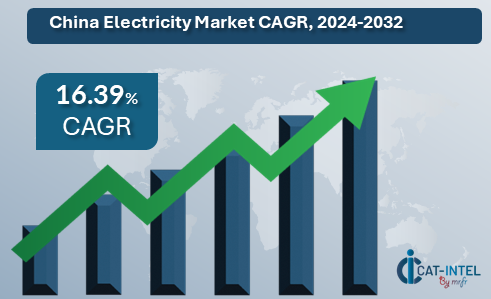
- Sector Contributions: Growth in the market is driven by:
- Renewable Energy Expansion: Increasing investments in solar, wind, and hydropower projects.
- Urbanization and Infrastructure: Rising electricity demand fueled by urban infrastructure development and smart city projects.
- Technological Advancements and Innovations: Adoption of smart grids, energy storage systems, and enhanced transmission technologies to boost efficiency and reliability.
- Investment Initiatives: Significant funding in upgrading grid infrastructure, expanding renewable energy capacity, and advancing energy storage solutions.
- Regional Insights: Eastern and Southern China dominate due to industrialization and urban population density, while Western regions focus on renewable energy projects.
Key Trends and Sustainability Outlook:
- Smart Grid Integration: Advanced grid technologies are improving efficiency, enabling demand-side management, and reducing energy losses.
- Energy Storage Solutions: Development of large-scale battery storage systems to support renewable energy integration.
- Focus on Sustainability: Enhanced efforts in reducing carbon emissions, transitioning to renewable energy sources, and adopting eco-friendly practices.
- Decentralized Energy Systems: Growing adoption of microgrids and distributed energy resources for local energy reliability.
- Digitalization: Use of big data and artificial intelligence to optimize grid operations and improve demand forecasting.
Growth Drivers:
- Policy Support: Strong government initiatives to promote renewable energy and reduce carbon emissions.
- Industrial Growth: Expansion of manufacturing and technology sectors increasing electricity demand.
- Urban Development: Accelerated urbanization requiring advanced and sustainable energy infrastructure.
- Renewable Energy Goals: Commitment to achieving net-zero emissions driving investment in green energy solutions.
- Technological Progress: Innovations in smart meters, automation, and grid modernization ensuring improved energy management.
Overview of Market Intelligence Services for China’s Electricity:
Recent analyses highlight critical challenges such as fluctuating energy prices, regulatory complexities, and the integration of renewable energy sources. Market intelligence reports provide actionable insights into procurement opportunities, enabling companies to identify cost-saving measures, optimize vendor relationships, and enhance supply chain resilience. These reports support compliance with stringent regulations while helping organizations maintain operational efficiency and control costs effectively.
Procurement Intelligence for China's Electricity: Category Management and Strategic Sourcing:
To remain competitive in the electricity sector, companies are optimizing procurement by implementing spend analysis for effective vendor management and strengthening supply chain operations with market intelligence. Strategic sourcing and category management are crucial for reducing procurement costs and securing a steady supply of resources. By leveraging actionable insights, businesses can streamline procurement strategies, mitigate risks, and achieve long-term sustainability in China's dynamic electricity market.
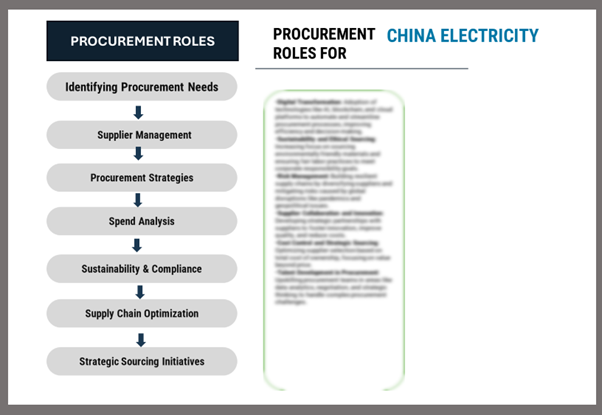
Pricing Outlook for China's Electricity Sector: Spend Analysis
The pricing outlook for electricity in China is expected to remain relatively stable, with potential fluctuations driven by various influencing factors. Key drivers include the costs of fuel, such as coal and natural gas, and the rising adoption of renewable energy sources. Additionally, the growing demand for advanced grid infrastructure and cleaner energy solutions is putting upward pressure on electricity pricing.
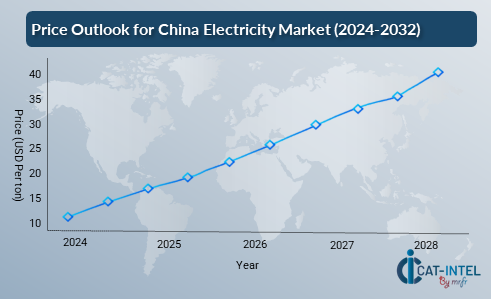
Graph shows general upward trend pricing for China Electricity and growing demand. However, there may be fluctuations influenced by economic conditions, technological advancements, and competitive dynamic.
Efforts to improve energy efficiency, optimize grid operations, and incorporate advanced technologies like smart meters and automated monitoring systems are crucial for managing costs. The development of large-scale energy storage solutions and grid modernization initiatives can help stabilize pricing trends.
Collaboration with sustainable energy suppliers, adherence to environmental policies, and improving energy distribution logistics are vital strategies for cost management. Despite these challenges, prioritizing investments in renewable energy, maintaining grid reliability, and adhering to regulatory compliance will be critical to effectively managing electricity pricing in China.
Cost Breakdown for China's Electricity: Total Cost of Ownership (TCO) and Cost-Saving Opportunities
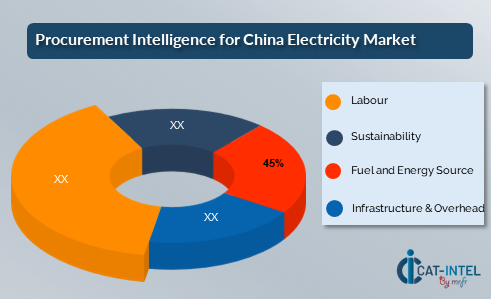
Fuel and Energy Sources (45%)
- Description: Includes costs associated with fossil fuels such as coal and natural gas, as well as renewable sources like wind, solar, and hydropower. These costs are critical to maintaining a reliable energy supply.
- Trends: The shift towards renewable energy sources is driving changes in procurement practices. Many suppliers are adopting sustainable energy generation methods to align with environmental regulations and meet growing clean energy demands.
- Labor (XX%)
- Sustainability (XX%)
- Infrastructure & Overheads (XX%)
Cost-Saving Opportunities: Negotiation Lever and Purchasing Negotiation Strategies
In China's electricity sector, optimizing procurement processes and investing in advanced technologies can lead to significant cost reductions and operational enhancements. Building long-term relationships with fuel and equipment suppliers, particularly in key supply regions, allows companies to negotiate bulk purchase discounts, reducing per-unit costs. Strategic partnerships with technology providers can offer cost benefits through favorable payment terms and enhanced system efficiencies.
Adopting smart grid technologies, energy storage systems, and automated monitoring solutions can reduce labor costs, enhance energy distribution precision, and minimize transmission losses. Additionally, transitioning to renewable energy sources and implementing energy-efficient grid operations can lower overall operational costs while aligning with sustainability goals. Employing multi-sourcing strategies for equipment and fuel minimizes risks related to supply chain disruptions and strengthens bargaining power with suppliers.
Supply and Demand Overview for China's Electricity: Demand-Supply Dynamics and Buyer Intelligence for Effective Supplier Relationship Management (SRM)
The electricity sector in China is witnessing robust growth, driven by rising demand across industries such as manufacturing, technology, and urban infrastructure. The balance between supply and demand is shaped by factors such as renewable energy integration, evolving regulatory frameworks, and technological advancements.
Demand Factors:
- Urbanization and Infrastructure Growth: Rapid urbanization and increasing investments in smart city projects are boosting electricity demand.
- Industrial Expansion: Growth in the manufacturing and technology sectors is driving the need for a reliable and sustainable power supply.
- Energy Transition Goals: The push toward renewable energy sources, including solar, wind, and hydropower, is significantly increasing electricity demand.
- Regulatory Compliance: Stricter energy efficiency and emission standards are encouraging the use of advanced grid technologies and cleaner energy solutions.
Supply Factors:
- Fuel Availability: The availability of coal, natural gas, and renewable energy sources is critical to ensuring a stable electricity supply. Market fluctuations in fuel prices can impact supply dynamics.
- Technological Innovations: Advancements in grid technology, including smart grids and energy storage solutions, are improving supply efficiency and reliability.
- Skilled Workforce: A skilled workforce is essential for implementing and maintaining modern grid infrastructure and ensuring uninterrupted energy distribution.
- Supplier Competition: Intense competition among energy suppliers is driving improvements in service quality and pricing, benefiting buyers through competitive offerings.
Regional Demand-Supply Outlook: China's Electricity
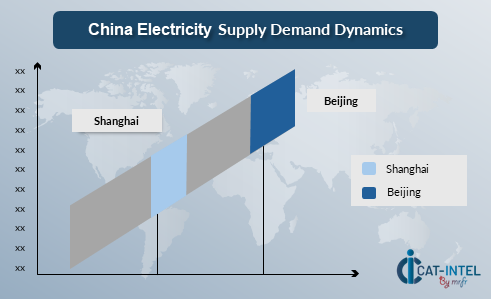
The Image shows growing demand for China electricity in both Beijing and Shanghai, with potential price increases and increased Competition.
China: Dominance in Electricity Supply
China holds a leading position in the Beijing and Shanghai driven by several key factors:
- Major Electricity Production Hubs: Cities like Beijing and Shanghai serve as key centres for electricity generation and distribution, supported by advanced infrastructure and favourable energy policies that promote large-scale production.
- Robust Energy Infrastructure: China benefits from extensive energy infrastructure, including state-of-the-art power plants and transmission networks, enabling efficient electricity generation and distribution across diverse sectors such as manufacturing, technology, and urban development.
- Cost-Effective Operations: The availability of affordable resources and economies of scale in electricity generation provides China with a competitive advantage in offering cost-efficient energy solutions both domestically and internationally.
- Export Leadership in Energy Technologies: China is a leading exporter of renewable energy technologies, such as solar panels and wind turbines, contributing to its influence in the global energy market and supporting international electricity supply chains.
- Focus on Sustainability and Modernization: Electricity producers in China are adopting green energy initiatives, transitioning to renewable sources like solar, wind, and hydropower, while implementing smart grid technologies to enhance energy efficiency and meet global sustainability standards.
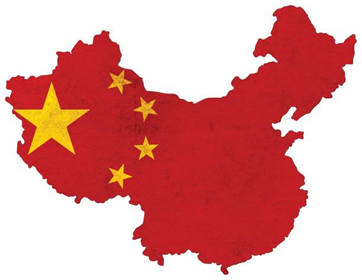
China Remains a key hub China Electricity price drivers Innovation and Growth.
Supplier Landscape: Supplier Negotiations and Strategies
The supplier landscape in China's electricity sector is highly dynamic, with a combination of state-owned enterprises and private companies driving industry growth. These suppliers play a critical role in shaping key market aspects, including electricity pricing, quality of energy infrastructure, and supply chain reliability. The market is competitive, with major state-owned enterprises dominating national distribution, while smaller private firms focus on niche markets, offering innovative and region-specific energy solutions.
The supplier ecosystem, particularly in key cities and provinces, is vibrant, with established players and emerging enterprises catering to both domestic and international energy demands. As the shift toward renewable energy and advanced grid technologies accelerates, suppliers are increasingly emphasizing innovation, sustainability, and strategic partnerships to enhance their market presence and address the rising demand for reliable and eco-friendly electricity solutions.
Key Suppliers in the Electricity Market Include:
- State Grid Corporation of China
- Southern Power Grid
- Huadian Corporation
- Huaneng Group
- Datang Corporation
- Energy Investment Corporation
- Resources Power Holdings
- Shanghai Electric Group
- Harbin Electric Corporation
- Dongfang Electric Corporation
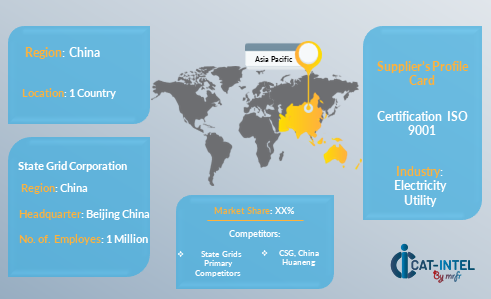
Key Developments Procurement Category Significant Development:
Significant Development | Description |
Market Growth | China's electricity sector is experiencing significant growth, driven by rising demand from urbanization, industrial expansion, and renewable energy projects. |
Sustainable Practices | Increasing focus on sustainable energy production, including the integration of renewable energy sources like solar and wind, to meet environmental regulations and carbon neutrality goals. |
Infrastructure Expansion | Development of advanced grid infrastructure, including smart grids and energy storage systems, to enhance reliability and efficiency in electricity distribution. |
Technological Innovations | Adoption of cutting-edge technologies such as AI-powered grid management and automated systems for monitoring and optimizing electricity flow. |
Digital Market Integration | Growth in digital platforms for energy trading and electricity management, enabling wider market access and better coordination across regions. |
Focus on Efficiency | Increasing demand for energy-efficient technologies, such as compact transformers and advanced metering systems, to reduce energy losses and support sustainable development. |
China Electricity Attribute/Metric | Details |
Market Sizing | China's electricity sector is projected to reach a valuation of approximately USD 9.32 Billion by 2032, growing at a CAGR of 16.39% from 2024 to 2032. |
Electricity Technology Adoption Rate | Approximately 50% of electricity providers in China are adopting advanced technologies such as AI-driven grid management and energy storage systems to improve efficiency. |
Top Electricity Strategies for 2024 | Focus on expanding renewable energy capacity, modernizing grid infrastructure, improving energy efficiency, and aligning with sustainability goals. |
Electricity Process Automation | 35% of electricity producers in China have automated processes such as energy monitoring, load balancing, and maintenance scheduling to optimize operations and ensure reliability. |
Electricity Process Challenges | Major challenges include balancing renewable and conventional energy sources, addressing carbon emission regulations, managing resource scarcity, and maintaining grid stability. |
Key Suppliers | Leading electricity suppliers include State Grid Corporation of China, China Southern Power Grid, and China Energy Investment Corporation. |
Key Regions Covered | Key regions include Beijing, Shanghai, and Guangdong, with high electricity demand driven by urbanization, industrial growth, and technological advancements. |
Market Drivers and Trends | Growth is driven by increased investment in renewable energy, urbanization, industrial expansion, and innovations in smart grid technologies. |
Frequently Asked Questions (FAQ):
Our procurement intelligence services provide in-depth insights into the electricity supplier landscape, identifying key energy producers and offering comprehensive market trend analysis. We deliver spend analysis, supplier evaluations, and strategic sourcing recommendations to help you secure reliable electricity at competitive rates.
We assist in evaluating the TCO for electricity by considering factors such as generation costs, distribution expenses, transmission fees, and environmental costs. Our detailed cost analysis helps you understand the full financial impact and make well-informed procurement decisions.
We offer risk management strategies that address challenges such as energy price fluctuations, supply interruptions, regulatory changes, and supplier stability. These solutions ensure a consistent and reliable electricity supply while maintaining quality and cost-effectiveness.
Our Supplier Relationship Management (SRM) services focus on building long-term, mutually beneficial relationships with electricity suppliers. We support contract negotiations, supplier performance assessments, and compliance checks to ensure a reliable energy supply at favourable terms.
We recommend procurement best practices such as supplier segmentation, risk assessment, demand forecasting, and performance tracking. These strategies help streamline electricity sourcing and ensure cost efficiency while meeting reliability and sustainability requirements.
Digital tools improve electricity procurement by automating processes and offering real-time data insights. These platforms allow you to monitor supplier performance, optimize energy consumption, and streamline procurement workflows, enhancing overall procurement efficiency.
Our supplier performance management services focus on monitoring key metrics such as energy delivery reliability, cost competitiveness, and compliance with environmental standards. This ensures that suppliers meet your expectations, helping you make more informed procurement decisions.
We support negotiation strategies by providing market intelligence, benchmarking supplier prices, and leveraging long-term agreements or bulk purchasing. These tactics help secure more favourable terms, ensuring cost-effective electricity procurement.
We offer market analysis tools that provide insights into electricity price trends, demand forecasts, supplier performance, and regulatory impacts. These tools empower you to make informed, data-driven decisions when sourcing electricity.
We guide you through regulatory and industry compliance to ensure that suppliers meet all necessary safety, environmental, and quality standards. This includes verifying certifications and ensuring adherence to relevant government policies and sustainability practices.
We offer strategies to mitigate supply chain disruptions, such as diversifying energy sources, developing contingency plans, and maintaining backup suppliers. These actions ensure a continuous electricity supply in the event of unforeseen challenges.
Our performance tracking solutions allow you to monitor key metrics like energy delivery accuracy, supplier responsiveness, and sustainability practices. This helps you assess supplier performance and optimize future procurement decisions.
We assist in identifying suppliers committed to sustainable energy practices, such as using renewable sources, reducing carbon emissions, and adopting eco-friendly technologies. This ensures your electricity procurement aligns with environmental and corporate sustainability goals.
Our pricing analysis services compare costs across suppliers, monitor price trends, and leverage negotiation tactics to help you secure the best pricing for electricity without compromising on quality or reliability.








